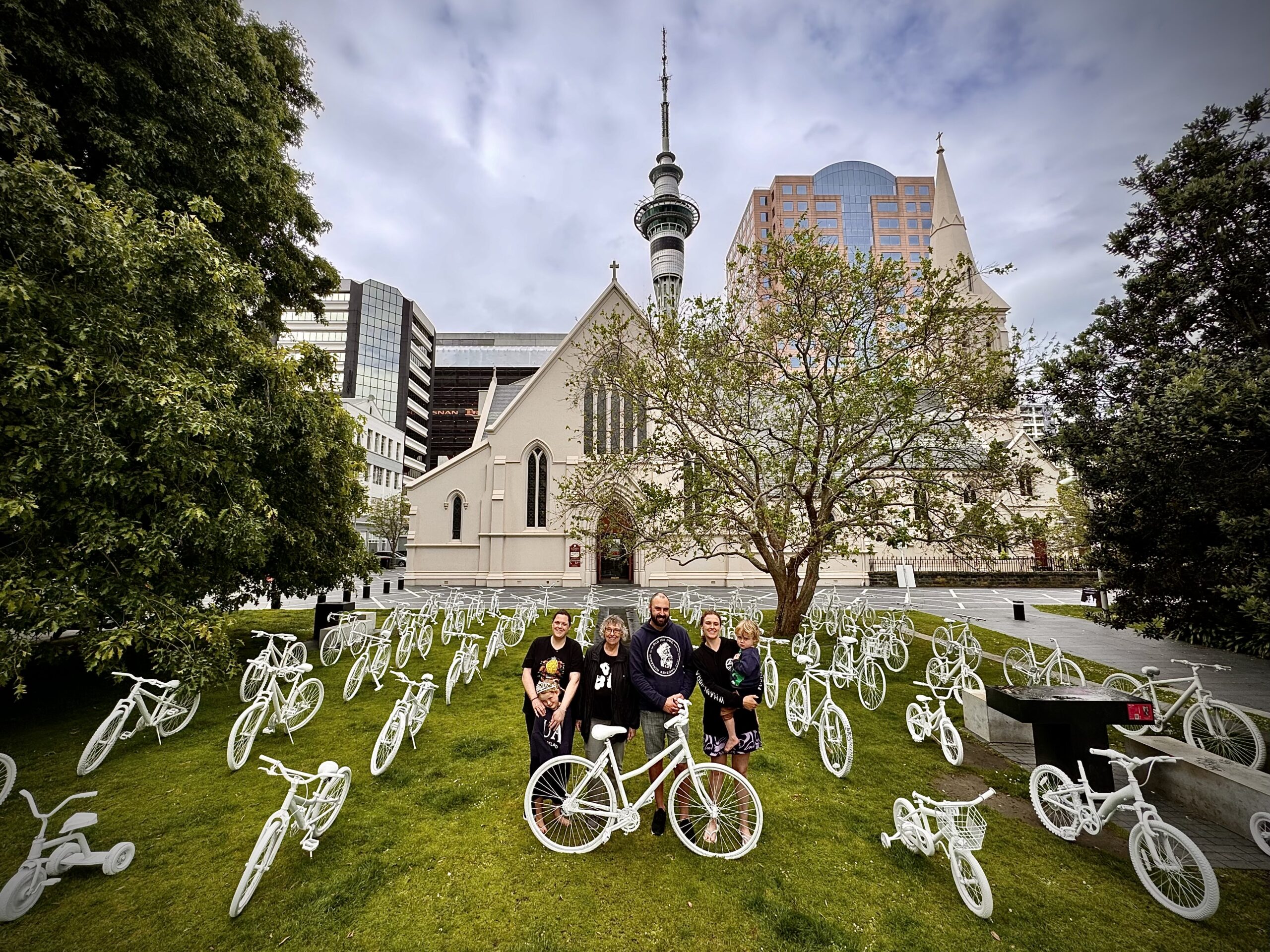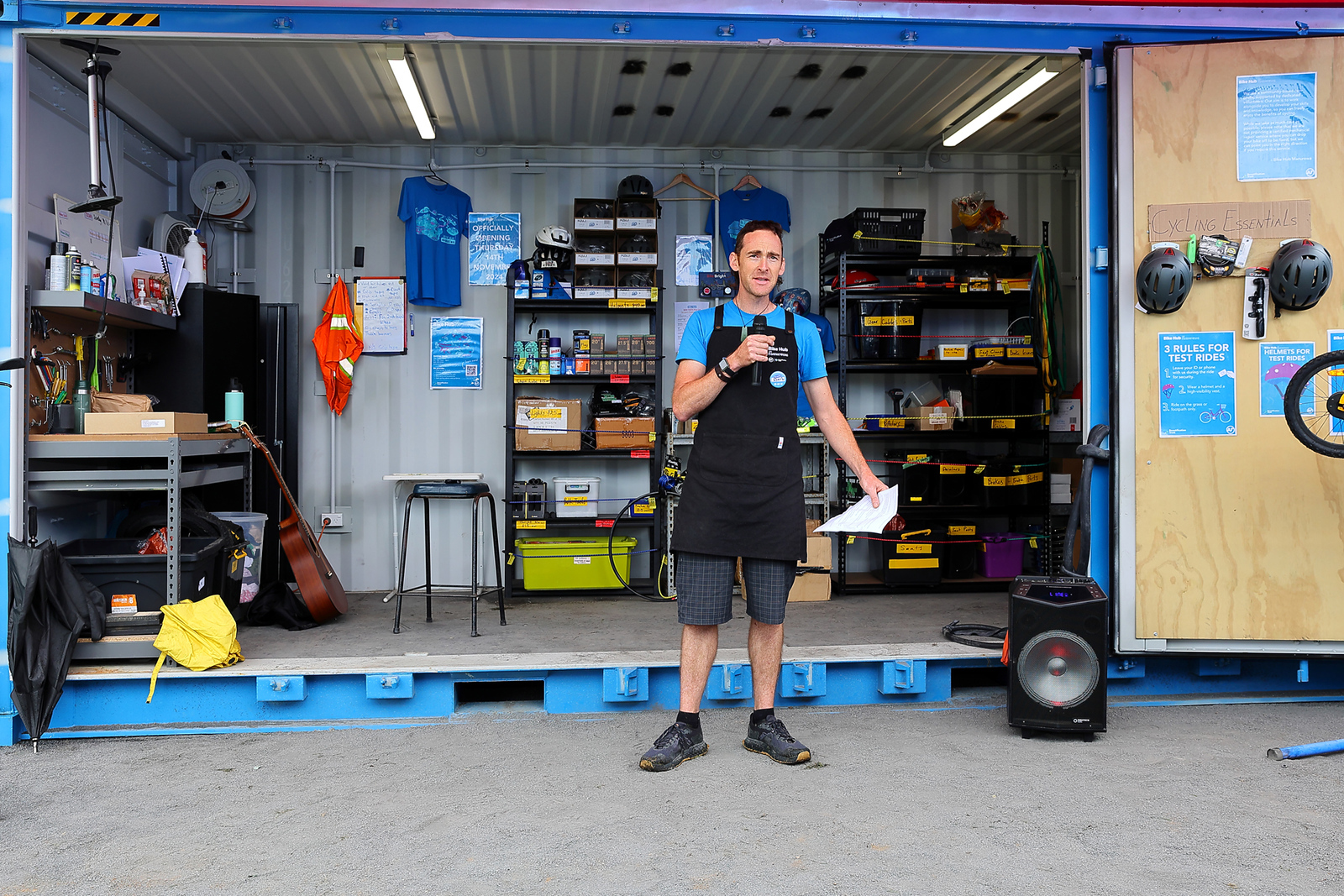North Shore resident and biking dad Mat Collins writes about how he was inspired to rethink his street, after a visit from the guru of Tactical Urbanism:
In June, the visiting urbanist Mike Lydon had the whole audience enthralled at Auckland Conversations, where he enthusiastically showcased ‘tactical urbanism’ as a tool to enact change within our communities. One of the key messages I took from the evening was the benefits of quick and cheap solutions.
When it comes to fixing our streets, the step change towards implementing the ultimate solution can seem prohibitively expensive, whereas a cheap, incremental approach can get the ball rolling sooner. Quick implementation means momentum can be maintained, encouraging others to participate and provide prompt system feedback. Using cheap materials (and lots of paint!) lowers the financial risk and allows a project to be iterative (i.e. easily modified and/or replicated).
Mike got me thinking on how Tactical Urbanism could be applied to a problem that’s been bugging me for a while… my own street.
My neighborhood: classic suburbia
I feel fortunate and blessed to live on Balmain Rd in Chatswood. My family and I have easy access to public transport, Highbury town centre with its fantastic library, schools, bush walks, and beaches. I know my neighbours; heck, I even like some of them.
Chelsea Primary School and Chelsea Kindergarten are located at the end of the street; the school is used throughout the week and weekend as a place for free-ranging kids to congregate and play. At the end of Balmain Rd are Kauri Point Reserve and Soldiers Bay, which are very popular with walkers. These local destinations, as well as a high number of young families and elderly residents, means there’s a lot of foot traffic past my house.
Balmain Road is 10m wide with in-line parking on both sides of the street. This onstreet parking is vastly under-utilised. At most, 25% of spaces are occupied at any one time, as most (if not all) houses have garages or off-street parking. A few years back, indented islands were installed at three locations to reduce the carriageway to 6m, presumably as a traffic-calming measure.
Defining the problem: speed and accessibility
Due to Balmain Rd being straight and wide, drivers are inclined to speed. Most of this is unintentional, but having occasional cars doing up to 80 km/h is an everyday occurrence. I’ve spoken to Auckland Transport about the speeding and asked if they’d look at traffic-calming measures. They said they’d do a traffic survey and get back to me. This was about 3 months back, and they’re yet to do anything. I’m not surprised, as I know they’ve got their work cut out for them and things like this easily fall through the cracks. (I’ve considered contacting the police about the speeding, but it’d be difficult for active enforcement to have any effect.)
The other factor is that there are plenty of unaccompanied kids walking and scootering to and from school each day, yet the only pedestrian crossing to the school is not directly accessible from the west side of the street. Children either have to run the 10m gauntlet across Balmain Road or tackle the rather nasty Balmain/ Radiata/ Onetunga intersection.
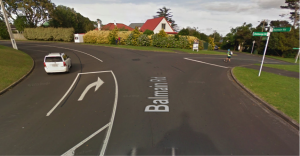
Simply put, Balmain Road is an old-school design with lots of space for cars and little consideration for other users.
A solution: paint, and lots of it
When I sat down to sketch out a tactical solution, my goal was something that was cheap to implement, effective at slowing vehicles, and that would improve safety for kids and well as signal to drivers that this street isn’t solely for them. I found some inspiration in recent posts from TransportBlog and Cycling Christchurch about Dutch roads, and the Northcote Safe Cycleway.
One way to encourage drivers to slow down is by adding visual complexity to a road. This could be achieved by painting a 2m wide shared space on either side of the carriageway to give the visual impression of a narrower road. It would also give the opportunity to allocate space for cyclists.
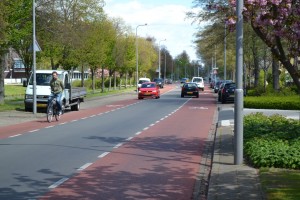
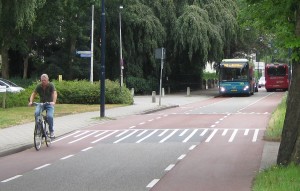
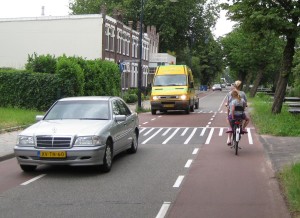
[Paint is key, as is clear communication with road users about what’s changing. A trial of a similar road design sans coloured paint was recently performed by NZTA on a rural road and didn’t go so well, for reasons that we’ll write about separately – Ed.]
Due to Auckland’s low cycle mode share (compared to the Netherlands), I’m not sure how successful the shared space design would be; it may create conflict between car drivers and bike riders. An alternative solution could be 1m wide dedicated cycle lanes in both directions:



In any case, parking is under-utilised on Balmain Rd, removing half of it would cause only minor inconvenience. By alternating the side of the road that the parking is on, chicanes could be created to further help reduce the “tunnel vision” effect of the long straight road. Speed bumps could be added between the existing indented islands and, with the use of red paint, reduced to a single vehicle lane to add passive enforcement of safer speeds.
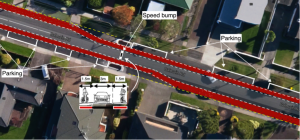
Finally, pedestrian crossings are needed, I see the intersection with Waipa St and outside the kindergarten as logical places.
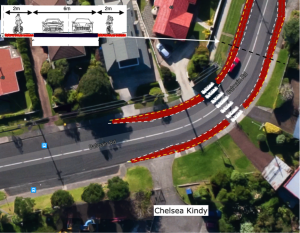
All up: a cheap solution, no major road alterations necessary, just some signs, speed bumps (the bolt-down type), paint, and adaption to curbs at pedestrian crossings.
I make no claim that this is the most appropriate solution for my street; it is merely the musings of one who is passionate about saving our city from its car-dominated state. We have plenty of residential roads that would benefit from some Tactical Urbanism – what are your ideas? What if a couple of standard designs were crafted that could then be easily implemented whenever AT conducts road maintenance and renewals?
Imagine the network of safer streets we could rapidly build!
– Mat Collins



